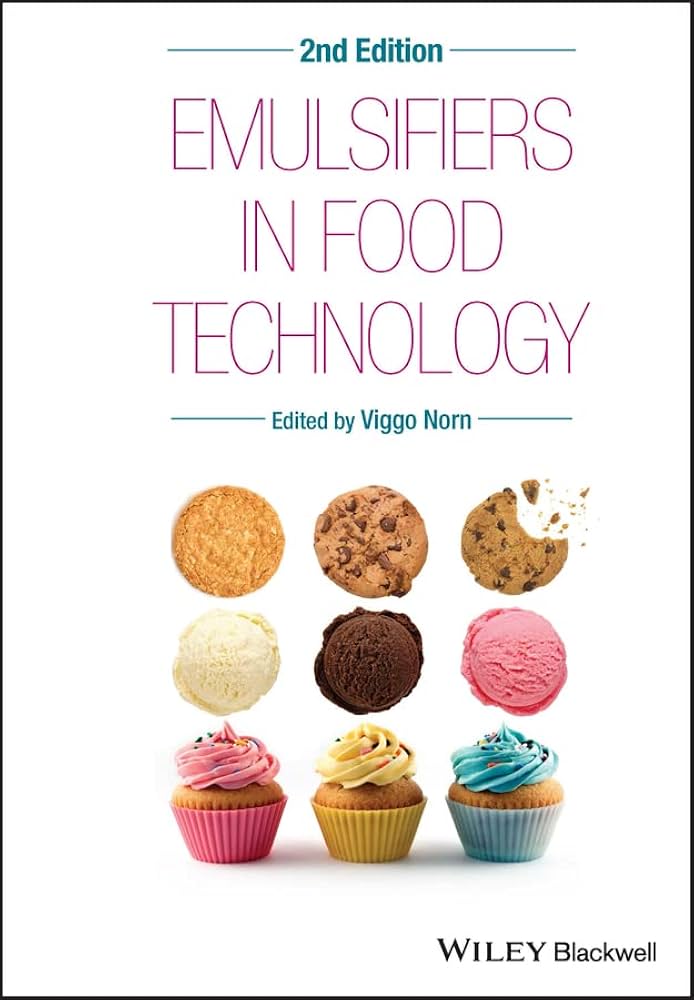Why Every Culinary Professional Should Learn About Emulsifier In Food
Discover the Advantages of Utilizing an Emulsifier in Food for Improved Culinary Experiences
Emulsifiers are usually forgotten yet vital elements in culinary practices. They help with the blending of disparate active ingredients, boosting both taste and structure. By making sure security, emulsifiers avoid the unpleasant separation of mixtures. Their versatility extends different applications, from sauces to dressings. Comprehending their function can lead to substantial enhancements in food high quality and presentation. What details advantages do emulsifiers provide that can transform day-to-day meals into extraordinary cooking experiences?
Comprehending Emulsifiers: What They Are and How They Function
Emulsifiers play a crucial function in the food industry, serving as representatives that promote the mixing of water and oil, two materials that normally do not blend. These substances possess both hydrophilic (water-attracting) and hydrophobic (oil-attracting) homes, allowing them to support mixes by lowering the surface stress between both phases. Usual emulsifiers include lecithin, mono- and diglycerides, and particular proteins.
When included in foodstuff, emulsifiers develop a stable solution, preventing splitting up and ensuring a consistent appearance - Emulsifier In Food. They are important in several applications, ranging from salad dressings and mayo to gelato and sauces. By preserving the honesty of mixes, emulsifiers not just enhance the visual allure of food but likewise boost mouthfeel and consistency. Their capability to maintain emulsions makes them vital in modern-day food formulation, adding substantially to the high quality and service life of numerous products
The Role of Emulsifiers in Flavor Improvement
While usually neglected, emulsifiers significantly add to taste improvement in foodstuff. They play an essential duty in boosting the overall taste experience by ensuring that flavor substances are equally dispersed throughout a dish. By supporting emulsions, such as dressings or sauces, emulsifiers prevent the separation of oil and water, enabling flavors to fuse together better. This uniform circulation not only heightens the taste but additionally ensures that each bite is constantly tasty.
In addition, emulsifiers can boost the perception of certain tastes, making them more pronounced on the palate. They may communicate with particular components, helping to release unpredictable taste substances that add to a dish's aromatic account. The usage of emulsifiers can considerably raise the culinary experience, changing basic recipes right into complicated and wonderful flavor trips. Their subtle yet impactful role in taste improvement ought to not be undervalued in the art of cooking.
Emulsifiers and Appearance: Producing Creamy and Velvety Cuisines
The effect of emulsifiers expands beyond taste enhancement to the domain name of texture, where they contribute in producing creamy and velvety dishes. By assisting in the uniform circulation of fats and water, emulsifiers enable the development of steady solutions, leading to an extravagant mouthfeel. This is particularly noticeable in products like mayo, sauces, and dressings, where a smooth, creamy uniformity is desired.
Emulsifiers such as lecithin and mono- and diglycerides function to minimize surface stress between active ingredients, enabling a harmonious blend that enhances the sensory experience. The velvety structure accomplished with emulsification can boost dishes, making them a lot more appealing and satisfying. In addition, the ability to create a silky structure permits cooks to incorporate various components without endangering uniformity, leading to innovative culinary developments. Essentially, emulsifiers play an essential role in transforming normal recipes right into extraordinary culinary experiences through texture enhancement.
Stability Matters: Exactly How Emulsifiers Prevent Splitting Up
A vital aspect of culinary emulsifiers is their ability to avoid separation, making sure that items preserve their desired texture and appearance gradually. Emulsifiers operate by maintaining combinations of oil and water, which naturally tend to divide as website link a result of distinctions in thickness and polarity. By reducing surface stress at the oil-water user interface, emulsifiers facilitate the development of stable solutions, permitting for an uniform distribution of ingredients.

Common Emulsifiers in Cooking and Their Applications
Recognizing the various emulsifiers typically made use of in food preparation reveals their considerable duties in enhancing food texture and security. Lecithin, obtained from egg yolks or soybeans, is commonly used in mayonnaise and salad dressings, offering a velvety uniformity. Mustard, additionally an emulsifier, aids in stabilizing vinaigrettes while imparting taste.


An additional preferred emulsifier is xanthan gum tissue, often used in gluten-free baking and sauces for its thickening homes. Guar gum offers a comparable function, enhancing the appearance of gelato and milk products.
Mono- and diglycerides, often located in refined foods, help improve life span and preserve texture. Casein, a milk protein, is made use of in cheese-making and creamy webpage sauces, adding to a smooth mouthfeel. Each of these emulsifiers plays a necessary duty in cooking applications, avoiding and ensuring preferable textures splitting up in diverse food.
Frequently Asked Concerns
Are Emulsifiers Safe for People With Food Allergies?
Emulsifiers can be secure for individuals with food allergic reactions, depending on the certain emulsifier used. It is necessary to identify the resource of the emulsifier, as some might cause allergies in sensitive people.
Just How Do Emulsifiers Impact the Nutritional Web Content of Food?
Emulsifiers can influence the dietary web content of food by improving vitamins and mineral absorption and improving structure. However, their existence might also water down particular nutrients, depending on the food matrix, potentially modifying total nutritional value.
Can Emulsifiers Be Used in Vegan Cooking?
Emulsifiers can be properly used in vegan cooking, supplying appearance and security to recipes. Plant-based emulsifiers like lecithin, derived from soy or sunflower, help blend active ingredients, boosting the overall quality of vegan culinary developments.
What Are the Ecological Influences of Emulsifier Manufacturing?
The environmental impacts of emulsifier production commonly consist of logging, water pollution, and high energy usage. Furthermore, some sources of emulsifiers can add to biodiversity loss, increasing worries regarding sustainability in food production methods.
Exactly How Do Emulsifiers Contrast to Natural Thickeners in Cooking?
Emulsifiers provide smoother structures and enhanced stability compared to natural thickeners, which can impart distinct flavors - Emulsifier In Food. While emulsifiers boost mouthfeel and look, all-natural thickeners give even more wellness advantages and can add to the meal's flavor profile
When added to food products, emulsifiers develop a secure solution, protecting against splitting up and making sure an uniform structure. While typically ignored, emulsifiers considerably contribute to flavor improvement in food items. Comprehending the different emulsifiers commonly used in food preparation discloses their significant functions in improving food texture and stability. Emulsifiers can be secure for individuals with food allergic reactions, depending on the certain emulsifier used. Emulsifiers can affect the nutritional content of food by enhancing nutrition absorption and boosting appearance.